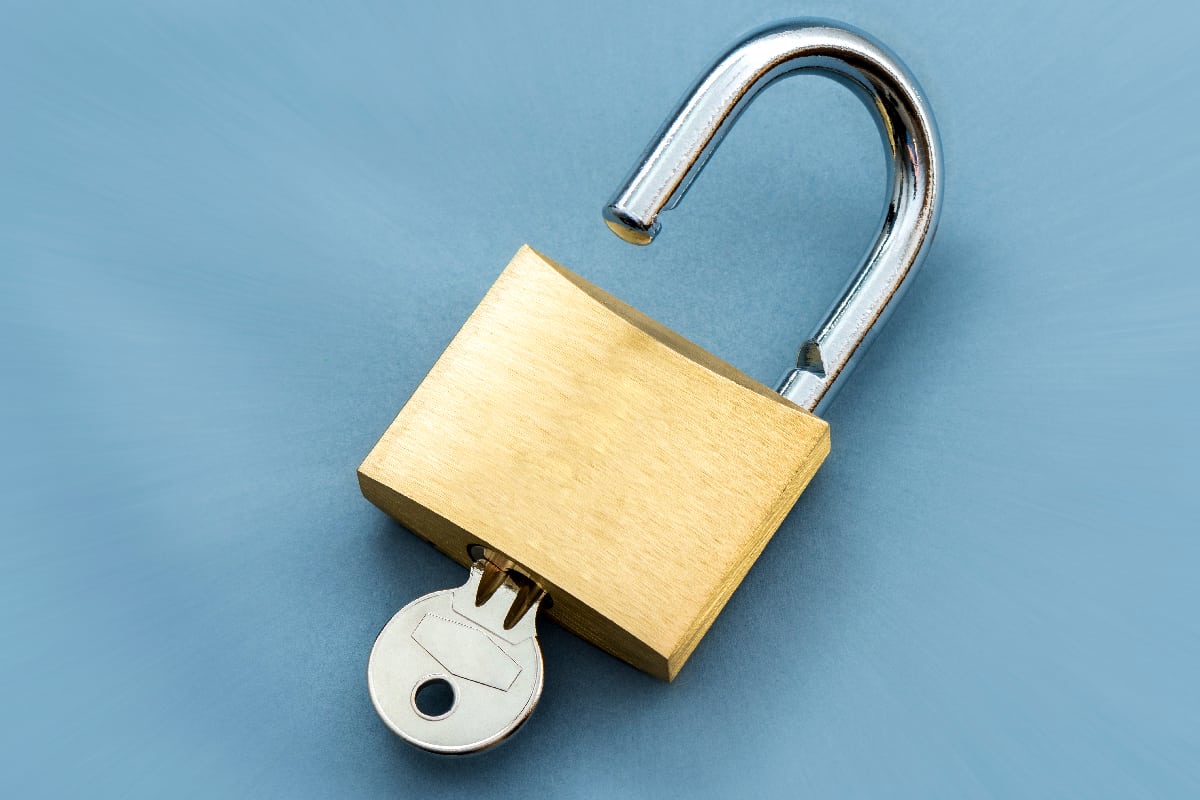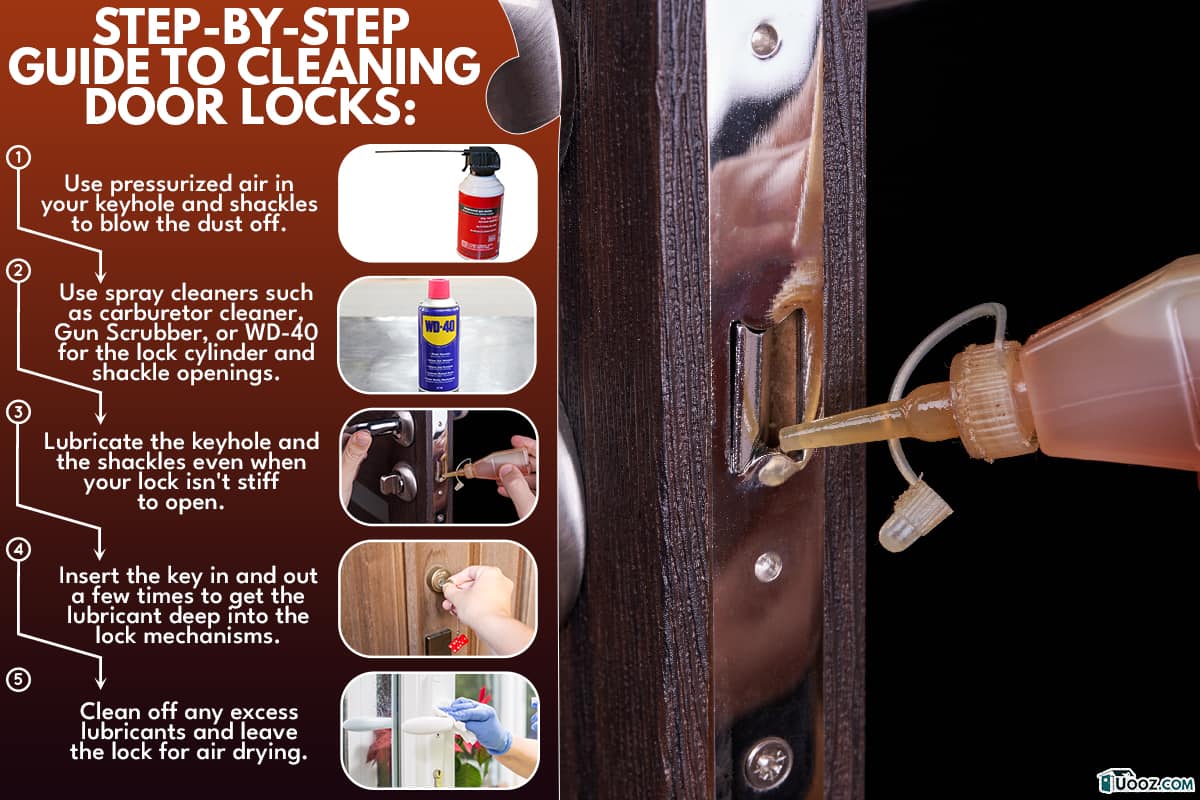You might be confused when you fish out your key and find out that it can't open your lock. You know you inserted the correct key, but why is it not turning? What can you do about this? If you're worried that you won't be able to open the lock anymore, that's not the case. Scroll down to read the information we searched just for you.
If your key isn't working in your lock, dust and dirt must have collected inside, so you must lubricate it.
Lubricating a lock is done depending on what kind of lock you have and which part of it you must apply the product into, such as:
- Night latch
- Interior mortice door lock
- Padlock
Each of these locks has different types of lubricants for them, so you must look into what best suits yours. But if you've already done lubricating and the problem is still present, it's time to call a locksmith.
Curious about what specific steps you must take for your lock? Well, we've got more instructions ready for you. If lubricating doesn't solve your problem, it is safe to say there is probably a different issue with your lock.
That's why we also included a list of several other lock issues and how to fix them. Read more about everything you must know below.
How To Fix A Stiff Lock
A stiff lock probably has a clog in it. This dirt buildup causes the lock pins to stay partially elevated, preventing the plug from turning.
Do not attempt to insert the key in again if you haven't lubricated your lock. Use the lubricant first to free up the lock's plug.
However, depending on your type of lock, there are different lubricants you must use and application methods. That is why we included simple directions for each of them.
1. Night Latch

Night latches are used for doors. There are two parts of night latches: exterior and interior. Remember to lubricate both, as it will help ensure your lock turns smoothly. Here's a guide on how to lubricate each of its parts:
Interior Night Latch
The interior night latch is the one with the lever. For an internal night latch, use a few drops of oil into or around the sliding bolt, the base of the knob, and the snip switch.
Exterior Night Latch
The exterior night latch is the part where you insert your key. For this part of the night latch, make sure only to use a dry lubricant and not oil-based ones such as WD-40, as, after some time, it may cause further clogging in your lock and cause stickiness.
Instead, use graphite powder which is a dry lubricant. Graphite powder has a narrow application spout, so it should be easy to apply. Use this by puffing the powder in the keyhole, then insert your key to push them in.
Click here to see this graphite powder on Amazon.
2. Interior Mortice Door Lock

Traditional timber doors probably have a mortice lock. If this type of lock becomes stiff to turn, put a few drops of oil-based lubricant into its keyhole. After a while, try inserting your key again, and it should work fine.
Check out this oil-based lubricant on Amazon.
3. Padlock

You must lubricate two parts in a stiff padlock: the cylinder and the shackle. Use a dry lubricant like graphite powder for the padlock cylinder or keyhole.
Applying a graphite powder to it will help keep its intricate mechanism functioning properly, especially when constantly exposed to a cold or wet environment.
On the other hand, oil them for padlock shackles to ensure that your lock doesn't stiffen.
Other Lock Problems And Solutions
If you're having trouble opening your lock, there may be another problem besides dirt and dust buildup. There are different issues you may encounter with locks.
The solution to it highly depends on which lock case you are experiencing. To help you, here are some of the lock problems you may encounter and how to fix them:
Key Wouldn't Insert

If you find it hard to insert your key into your lock, check if you're using the right key first. Then, if you're sure that you're using the correct one, the reason must be a poorly cut key.
If you have an extra key, use it to solve your lock problem. However, contact a locksmith to help you if you only have one.
Broken Key Piece Inside Lock

You probably never thought your key would break just as you inserted it. But, when it does, make sure not to try further locking or to unlock your door, as it will make it hard for you to retrieve the broken piece.
You can try resolving this if the broken key is still visible. Just insert the needle tip of a nosed plier into the keyhole. Then, try grabbing and pulling the broken key piece out.
But, if you find difficulty pulling one, don't force it, as there's a chance you'd get the broken key further down. Instead, hire a locksmith for help.
Click here to check out this needle nose plier on Amazon.
UPVC Door Lock Is Difficult To Lock or Unlock

Door locks that are easy to unlock or lock when it is open but not when it is closed means a problem with the alignment of the locking points.
UPVC doors are made to become adjustable, but it doesn't mean they can't slip or drop out of position.
Unfortunately, only a locksmith can fix this. You may also need to replace parts of the door or your lock.
How To Clean Locks

Regularly cleaning your lock helps prevent any lock-related issues from arising. You must clean them every 3 to 6 months for proper lock maintenance.
In addition, it will also help you ensure that it works well even under a freezing temperature in your area. Follow these steps to clean them:
- Use pressurized air in your keyhole and shackles to blow the dust off.
- Use spray cleaners such as carburetor cleaner, Gun Scrubber, or WD-40 for the lock cylinder and shackle openings.
- Lubricate the keyhole and the shackles even when your lock isn't stiff to open.
- Insert the key in and out a few times to get the lubricant deep into the lock mechanisms.
- Clean off any excess lubricants and leave the lock for air drying.
Click here to see this air blower on Amazon.
Check out this carburetor cleaner on Amazon.
Can A Lock Freeze?
Locks can freeze, especially at 32 degrees Fahrenheit or below, as this is the temperature when water turns into ice. The moisture in a key lock may freeze at this temperature, which will also turn its internal components into ice. When this happens, it will become hard for you to open the lock unless the ice melts.
You can melt the ice by wrapping it around warm things like a mug with any hot liquid.
You may also try using a hand sanitizer by squeezing it onto your key and inserting the key inside as they lower the water's freezing point.
Lastly, you can try coating it with petroleum jelly inside and leave it for several minutes before inserting and turning the key slowly.
How Much Will You Spend To Hire A Locksmith?
On average, getting a locksmith can cost about $85 to $175. If you need them to unlock a house, the price ranges from $65 to $185.
On the other hand, for changing car locks, the rate is between $75 to $220, depending on how complex the job is.
Furthermore, the prices may vary according to how quickly you need the job done. Getting them may cost you a lot, so you must try resolving the issue yourself before hiring them to save money.
In Closing
If your lock is stiff, then it only needs to be lubricated. You can use an oil-based or a dry lubricant, depending on what kind of lock and which part you need to resolve to unlock your door.
For instance, cylinders or keyholes should only be applied with a dry lubricant, while lock shackles can be used with oil-based lubricants.
Meanwhile, if you have other lock-related issues, you can also fix them yourself, as it is generally easy to resolve. However, if the problem is more extensive, you will need a locksmith to help you.
Before you go, if you have other concerns about other types of locks, these posts may help you:





